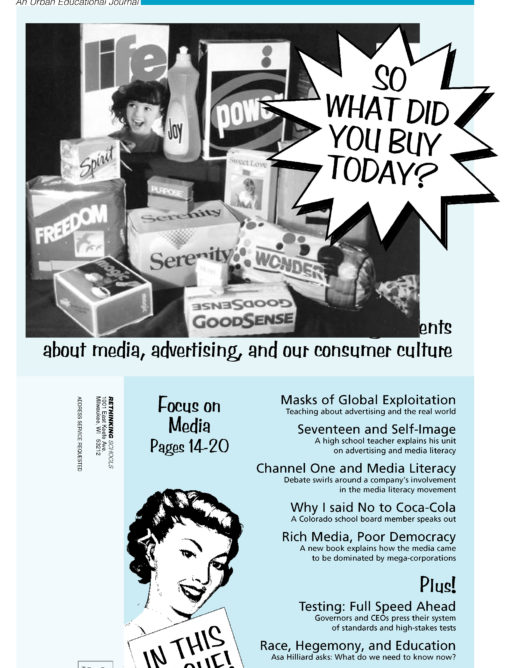Preview of Article:
Advertising the Truth
A Rethinking Schools Classroom Handout Classroom exercises that help students explore the social and environmental consequences of endless consumption.
1. Choose a product (possibly the one you did in your “Journey of the _____” research*) and make an ad (either magazine or TV). Tell a deeper truth about the product than would be told in an actual ad. For example, you might have the ad narrated by the worker who makes this product — for example, in Honduras or Saipan. Have him or her tell about what really goes into the product that the advertiser is selling. They could talk about wages, working conditions, or living conditions.
Or: Have “Mother Earth” be the narrator. How does Mother Earth feel about all the chemicals, packaging, waste, etc., created by mass consumption? Talk about this product from the standpoint of the environment. Or, for example, have the Huaorani leader, Moi, narrate a car ad, and talk about the effects of the global automobile culture on the Huaorani people and the rainforest.?
2. Another way to get at this: Choose one of the ads posted on the wall or another one you find from a magazine (or TV). Write about that product in the way you think it should be written about. “The people who make this product want you to think … but really. …” Make an “ad” to teach people how to read the deeper meaning of an ad.
3. Model an ad after the Adbusters “Uncommercials” that try to raise awareness about over-consumption. Choose an idea you’ve had this year about the world that you think is important. Find a creative way to “advertise” that idea. You could do it as a short play, like the girls in the “Affluenza” video.
4. Write and illustrate a children’s book about advertising, or about some aspect of the “global sweatshop” and consumerism.

